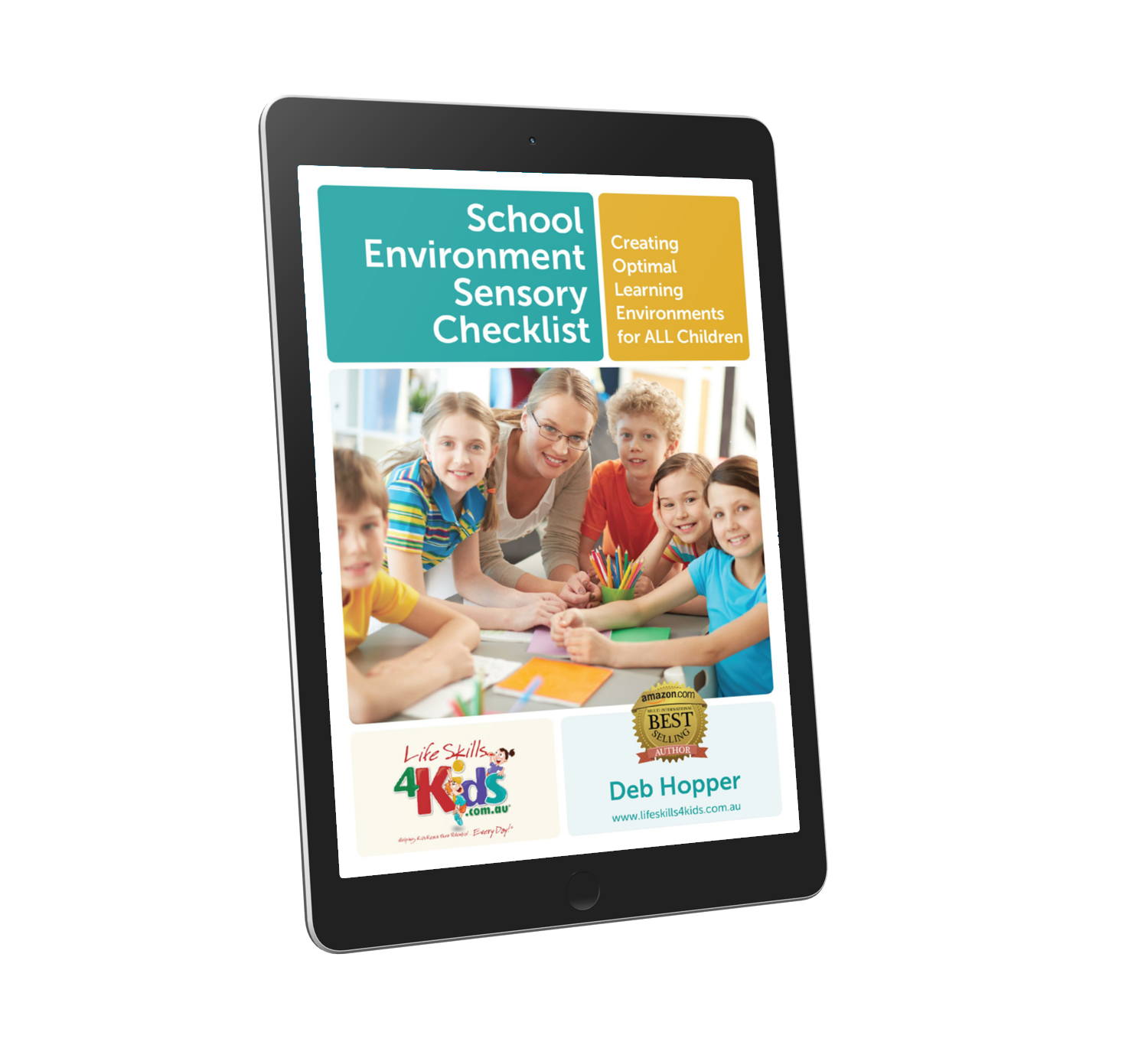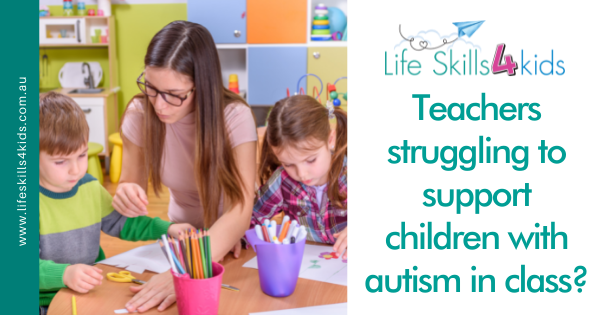Today, another incident of a child with autism being restrained and put in a ‘time-out’ room, hit the headlines in Australia, this time in Hervey Bay, Queensland. (see http://www.couriermail.com.au/news/queensland/school-puts-autistic-boy-in-cell-like-room/story-fnihsrf2-1227584707583)
This is the THIRD time this has hit headlines in Australia in six months, and situations like this highlight the strain and difficult situations that teachers find themselves in when supporting some students with additional needs. We need to work to train and support teachers so they understand the “how” and “why” children struggle with behaviour, sensory processing and self regulation.
As an Occupational Therapist having worked in Paediatrics and Mental Health for the past 18 years, I work with children with autism and developmental difficulties and especially children who struggle with behaviour which may be underlined by sensory processing difficulties. Sensory Processing difficulties occur when sensory information is not organised effectively in the brain, which means that sensory information cannot be interpreted correctly, and behavioural issues occur when this information short-cuts to the amygdala, our emotional centre of our brain.
In April I wrote a blog topic on the “Child Caged” incident in Canberra. Here is the link- https://www.lifeskills4kids.com.au/2015/04/03/child-with-autism-caged-at-school/. This incident occurred in Canberra, and a similar incident occurred in Victoria earlier this month.
Is this just the tip of the iceberg? This is very concerning!
I have just spent the past 2 weeks on workshop tour with Ms Diana Henry, Occupational Therapist and International Expert in Sensory Processing. She spoke at length about creating sensory safe environments, and had lots of examples from around the world and practical strategies for working with children who struggle with behavioural and sensory processing difficulties.
One part of my daily role is to support teachers and parents and help create sensory safe environments for children with autism, behavioural or emotional regulation issues. Through sensory assessment, we can develop individualised programs and sensory safe environments that are suited to the individual child. This is the key. Individual environment supports to support individuals.
Using the Sensory Processing Measure for Preschoolers (2-5 year olds) or the Sensory Processing Measure for School age children (5- 12 year olds) as assessment tools, we are able to create a clear picture of what individual sensory needs children have. The next step is to create individualised activities/ program to support a child’s sensory needs through the SPM QuickTips at a team meeting where parents and the whole school team (including the class teacher, music teacher, art teacher and even the bus driver) are present. A whole team approach is important to identify individualised strategies, to create a program for the child that meets their needs and from that we can keep data of when the strategies are implemented, and create our own data driven interventions that we know work for supporting the individual child.
Sensory safe environments are humane and safe and they connect with children where they are at in terms of their emotional and sensory regulation. We need to accept and BE WITH children where they are at. We need to be CHILD-LED. Teaching and supporting teachers and parents on safe alternatives to holding children in a ‘cage’ or ‘locked room’ is very important. Creating truly individualised and safe ‘sensory safe environments’ is so important and with training is a real possibility in all learning environments.
Get your own copy!
Do you have children in your class who struggle with autism, learning difficulties or reduced concentration? Then the School Environment Sensory Checklist (SESC) is your entry into transforming your classroom!
Quickly and easily evaluate your classroom from a sensory perspective to enhance learning needs of all children, including children with autism and learning difficulties.
Have less distracted children who listen for longer and enjoy times of focused learning and easier transitions. Whether you are a newly qualified teacher or have many years experience, the School Environment Sensory Checklist (SESC) will refresh your vision for your classroom!

___________________________________________________________
For original article and photo credit please see: http://www.couriermail.com.au/news/queensland/school-puts-autistic-boy-in-cell-like-room/story-fnihsrf2-1227584707583
- Deb Hopper is available to come to your school to train teachers in sensory-based strategies to support children with autism or sensory processing difficulties. She provides Australian and international training on behalf of Ms Diana Henry including the Tool Kit for Kids workshop, Sensory Tools for Infants, Toddlers and Preschoolers; and the Sensory Processing Measures Quick Tips (SPM Quick Tips and SPM-P Quick Tips) workshop. Email workshops@lifeskills4kids.com.au for further information and workshop requests.
- Deb is the author of “Decreasing Meltdowns and Improving Concentration” and the soon to be released book “Helping Children Soar in a Post Digital World – Teaching Kids to Stress Less. https://www.lifeskills4kids.com.au/product/reducing-meltdowns-improving-concentration-the-just-right-kids-technique/
- Here’s an example of a sensory pack that can help children cope in class: https://www.lifeskills4kids.com.au/product/diana-henry-value-pack-large/
- Deb Hopper is available for interview on this topic. Email debbie@lifeskills4kids.com.au, see lifeskills4kids.com.au or phone 02 6555 9877 to book an interview with Deb.

